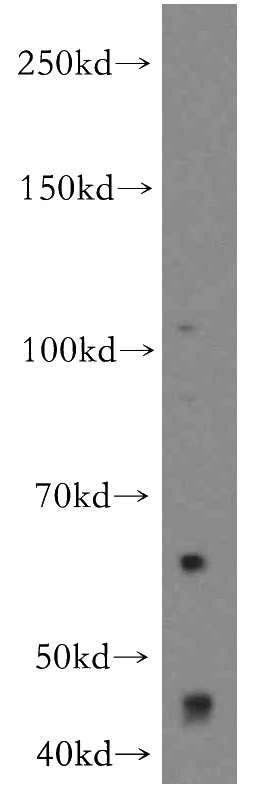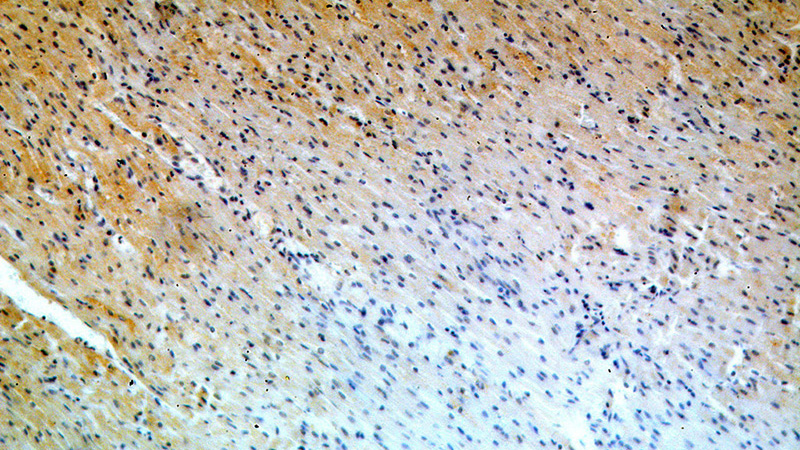-
Product Name
OVCA1 antibody
- Documents
-
Description
OVCA1 Rabbit Polyclonal antibody. Positive WB detected in HeLa cells. Positive IF detected in HeLa cells. Positive IHC detected in human heart tissue. Observed molecular weight by Western-blot: 40-60kd
-
Tested applications
ELISA, WB, IHC, IF
-
Species reactivity
Human; other species not tested.
-
Alternative names
DPH like 1 antibody; DPH1 antibody; DPH1 homolog antibody; DPH1 homolog (S. cerevisiae) antibody; DPH2 like 1 antibody; DPH2L antibody; DPH2L1 antibody; FLJ33211 antibody; HsDph1 antibody; OVCA1 antibody
-
Isotype
Rabbit IgG
-
Preparation
This antibody was obtained by immunization of OVCA1 recombinant protein (Accession Number: NM_001383). Purification method: Antigen affinity purified.
-
Clonality
Polyclonal
-
Formulation
PBS with 0.02% sodium azide and 50% glycerol pH 7.3.
-
Storage instructions
Store at -20℃. DO NOT ALIQUOT
-
Applications
Recommended Dilution:
WB: 1:200-1:1000
IHC: 1:20-1:200
IF: 1:20-1:200
-
Validations

HeLa cells were subjected to SDS PAGE followed by western blot with Catalog No:113520(OVCA1 antibody) at dilution of 1:300

Immunohistochemical of paraffin-embedded human heart using Catalog No:113520(OVCA1 antibody) at dilution of 1:50 (under 10x lens)

Immunohistochemical of paraffin-embedded human heart using Catalog No:113520(OVCA1 antibody) at dilution of 1:50 (under 40x lens)

Immunofluorescent analysis of HeLa cells using Catalog No:113520(OVCA1 Antibody) at dilution of 1:50 and Alexa Fluor 488-congugated AffiniPure Goat Anti-Rabbit IgG(H+L)
-
Background
OVCA1, also named as DPH1, is an evolutionarily conserved gene, indicative of a fundamental biological role in a variety of species. In humans, OVCA1 was initially mapped within the deletion region of 17p13.3 involved in early ovarian cancer (PMID: 8564979). Ovca1-null mice, mainly addressed its tumor suppressive role and potential cooperative role in modifying p53-deficient tumorigenesis (PMID: 14744934). OVCA1 acts as a component of an enzyme complex with DPH2, DPH3 and DPH4 that functionally catalyzes the first step of the diphthamide biosynthesis pathway, to posttranslationally modify a conserved histidine residue (His699 in yeast and His715 in human) of eukaryotic elongation factor 2 (eEF-2).
Related Products / Services
Please note: All products are "FOR RESEARCH USE ONLY AND ARE NOT INTENDED FOR DIAGNOSTIC OR THERAPEUTIC USE"
